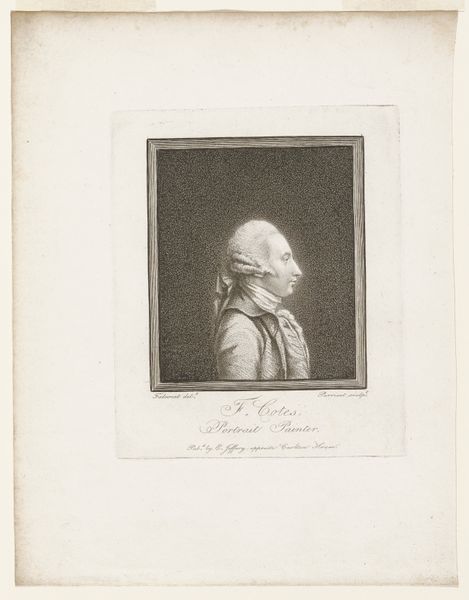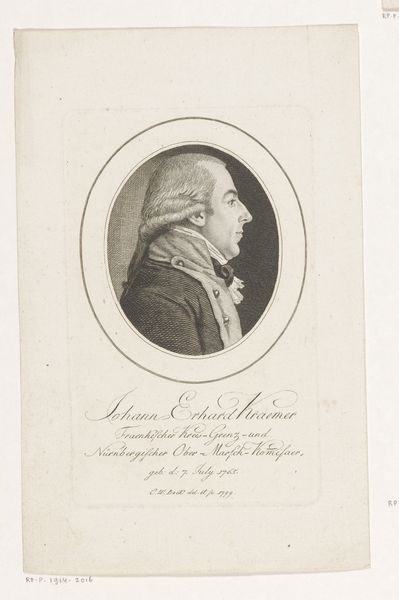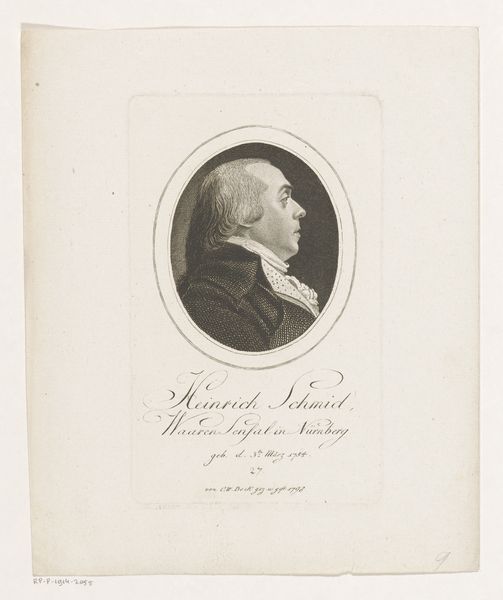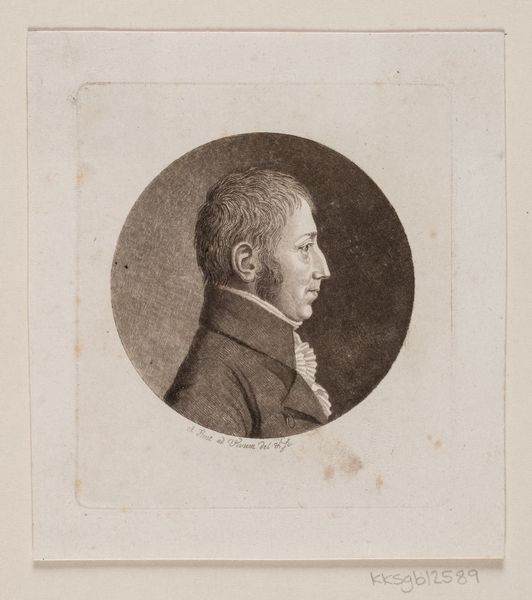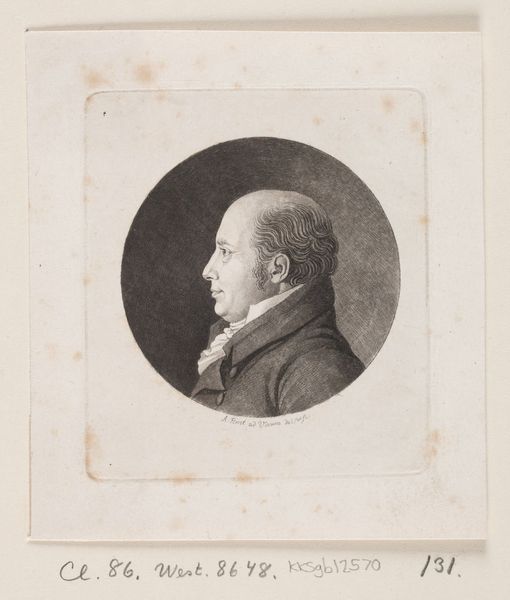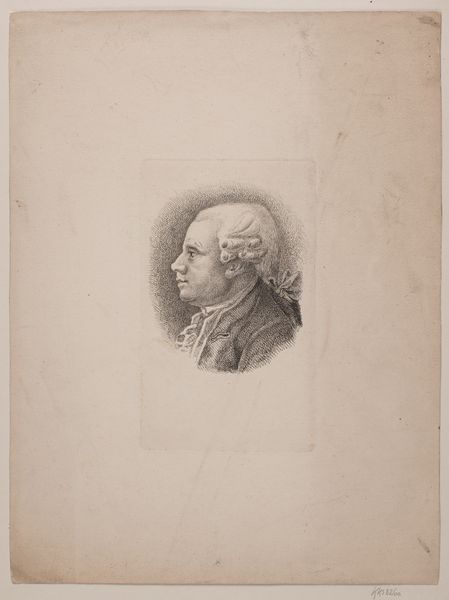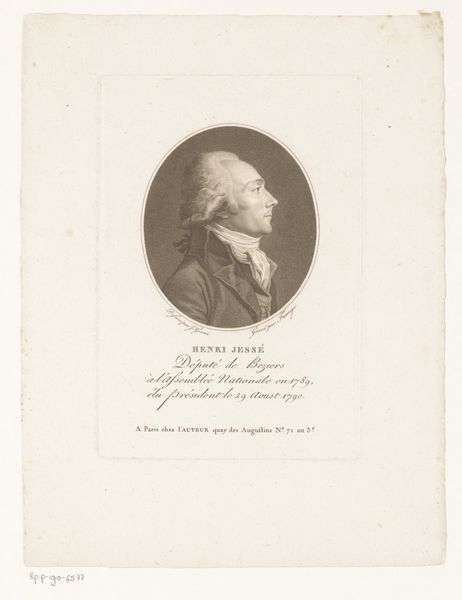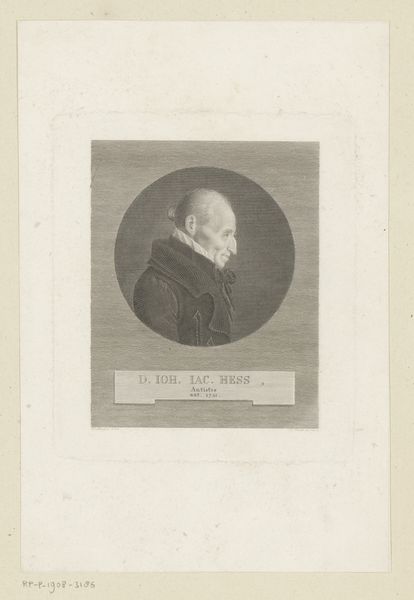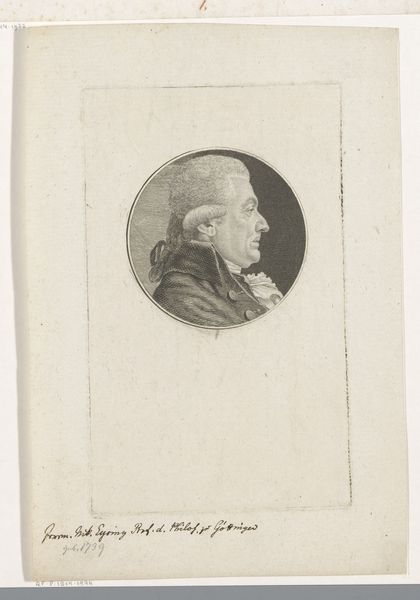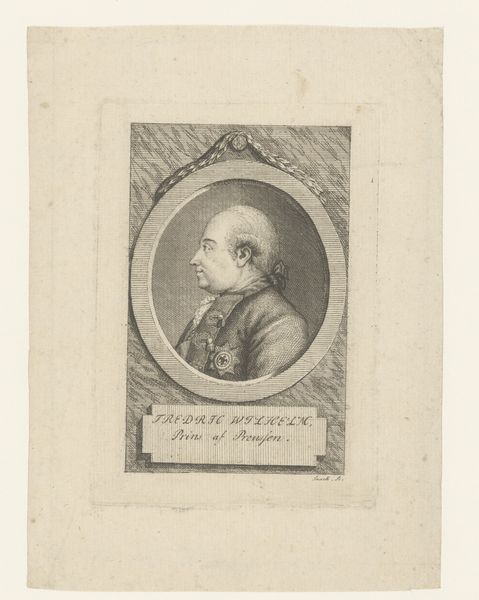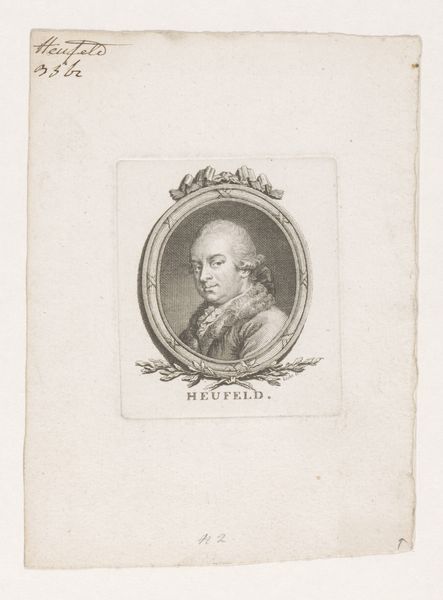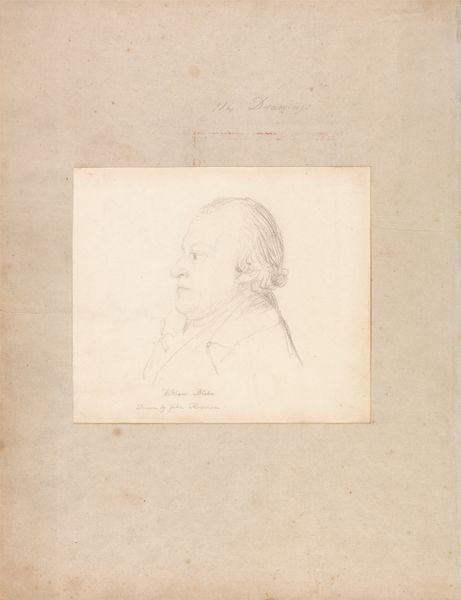
print, engraving
#
portrait
#
neoclacissism
# print
#
line
#
engraving
Dimensions: height 154 mm, width 96 mm
Copyright: Rijks Museum: Open Domain
Curator: Here we have a print from 1794, titled "Portret van Johann Christian Daniel von Schreber," crafted by Christoph-Wilhelm Bock. It's currently held at the Rijksmuseum. Editor: It's quite austere, isn't it? A starkness in the line work gives it a rather serious and perhaps even critical air. Curator: Yes, that sharpness speaks to its construction. It's an engraving, isn't it? So the precision of the line work would be incredibly dependent on the engraver's skill and the tools used. Consider the economics of printmaking at that time; it played a huge role in access and dissemination of imagery and knowledge, right? This kind of reproduction would have been integral for communicating status. Editor: Absolutely. And status, here, seems intertwined with the sitter's position within systems of knowledge. Schreber was a highly regarded naturalist and scientist. You see the intellectual authority communicated, not just in the choice of Neoclassical style, but also in how that seriousness seems carefully calibrated for a specific audience engaged with enlightenment ideals. How interesting that his legacy became attached to his son's theories around physical and social control. Curator: Right! Bock uses line, rather than color, to render depth and texture. Consider also the choice of clothing, suggesting both the affluence and professional status of the sitter. We're dealing with materials crafted by skilled hands reflecting a very distinct social fabric. Editor: Exactly. Looking at the print this way makes us consider whose voices are amplified through portraiture and print culture, and how those avenues have shaped public and historical perceptions. Also interesting to me is what printing itself has historically meant, because that changes the way this can be perceived; is it "original" or meant for endless duplication? Curator: Precisely, it becomes about thinking around the construction of ideas and systems and even class. So what does it mean to make that labor so obvious by displaying this method? Editor: It leaves us with so much to consider beyond the likeness of a single man. Curator: A fine thought to end with, thank you.
Comments
No comments
Be the first to comment and join the conversation on the ultimate creative platform.
